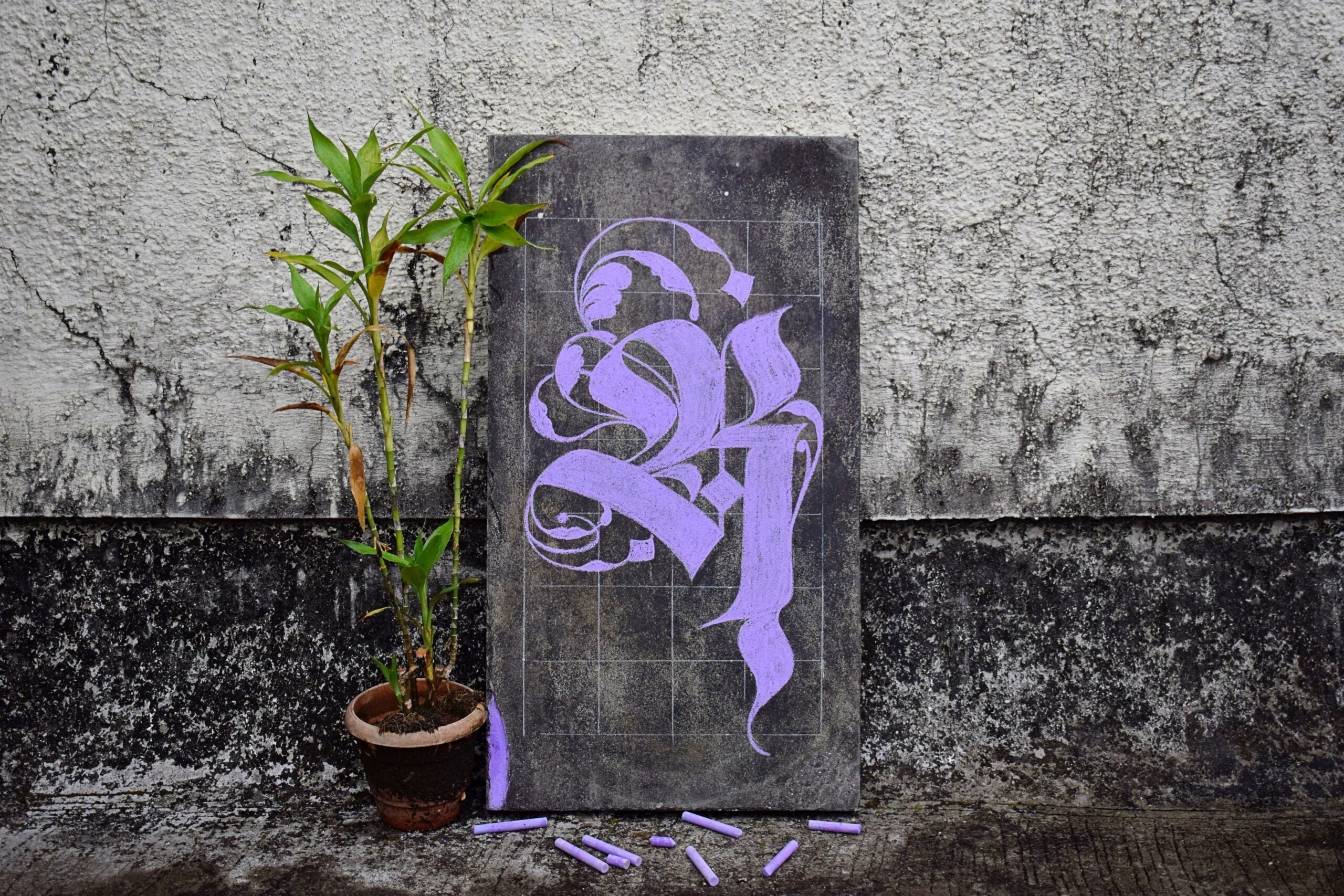As an experienced calligrapher and passionate writer, I am thrilled to unveil the fascinating world of calligraphy in this article. Brace yourself for a journey into the depths of Chinese and Japanese calligraphy, where we will uncover surprising and delightful fun facts about these ancient arts. Prepare to be captivated as we explore the intricate nuances and mesmerizing beauty of this timeless craft. So, let’s dive in and discover the captivating world of calligraphy!

Fun Facts About Calligraphy
Calligraphy, the art of beautiful writing, is a fascinating and ancient craft that has captured the imagination of people for centuries. In this article, we will delve into some fun and surprising facts about calligraphy that will leave you amazed and inspired.
1. Calligraphy is a universal language
Calligraphy is more than just an art form; it is a language in itself. Just like spoken languages, calligraphy has different styles and alphabets that vary across cultures and regions. From the elegant curls of Copperplate to the bold strokes of Gothic, calligraphy transcends borders and connects people through its beauty and craftsmanship.
“Calligraphy speaks to our souls through its strokes, transcending the barriers of language and culture.” –
2. Calligraphy dates back thousands of years
Did you know that calligraphy has a rich history that dates back thousands of years? The earliest evidence of calligraphy can be traced back to ancient civilizations such as Mesopotamia, Greece, and China. These ancient cultures valued the written word and developed intricate calligraphic scripts to document their history, literature, and religious texts.
3. Calligraphy influenced the invention of the modern typeface
The art of calligraphy played a significant role in the evolution of typography. As scribes meticulously handcrafted letters and symbols, they laid the foundation for what would later become the fonts and typefaces we use today. The calligraphic principles of balance, form, and rhythm influenced the design and development of modern typefaces, ensuring legibility and visual appeal.
4. Calligraphy inspires creativity and mindfulness
Engaging in calligraphy not only allows you to create beautiful works of art but also promotes relaxation and mindfulness. The rhythmic movements of the pen or brush require focus and concentration, allowing for a meditative experience. Calligraphy is a way to express your creativity and connect with the present moment, bringing a sense of tranquility and joy.
5. Modern applications of calligraphy
While calligraphy has deep roots in history, it continues to find relevance and application in the modern world. From wedding invitations to logo designs, calligraphy adds a touch of elegance and personalization to various projects. It is also embraced in the digital realm, with digital calligraphy tools and fonts enabling artists to create stunning pieces on electronic devices.
“Calligraphy bridges the gap between tradition and modernity, bringing the beauty of the past into the present.” –
In conclusion, calligraphy is not just a form of writing but a means of artistic expression that transcends time and culture. Its fascinating history, universal appeal, and enduring relevance in today’s world make it an art form worth exploring and celebrating.
So, the next time you witness the graceful strokes of calligraphy, take a moment to appreciate the rich heritage and hidden stories behind this ancient craft.
“Unlock the secrets of calligraphy and let its beauty captivate your imagination.” –
Calligraphy is a fascinating art form with a rich history and countless interesting tidbits. If you’re looking for weird facts about calligraphy, look no further! Did you know that calligraphy is not limited to just one culture? Explore some fun facts about Chinese calligraphy and be amazed by the elegance and precision of their brushwork. In the world of handwriting, there are so many intriguing elements to discover. Dive into some fun facts about handwriting that will make you appreciate the beauty of penmanship even more. Have you ever wondered about the art of Japanese calligraphy? Uncover some incredible facts about this ancient practice and get ready to be inspired by the beauty of their strokes. Islamic calligraphy is a stunning fusion of art and religion. Discover the beauty and meaning behind these intricate script designs with these fun facts. And for our young enthusiasts, we have some fun facts about calligraphy just for kids! Let their curiosity ignite as they explore the world of writing and art. So, what are you waiting for? Click on the links below to uncover these fun facts and immerse yourself in the captivating world of calligraphy.
- weird facts about calligraphy
- fun facts about chinese calligraphy
- fun facts about handwriting
- fun facts about japanese calligraphy
- fun facts about islamic calligraphy
- Fun Facts About Calligraphy For Kids
Now, brace yourself for a journey through the enchanting realm of calligraphy!
Fun Facts About Chinese Calligraphy
Chinese calligraphy, with a history spanning over 1,000 years, holds a special place in Chinese culture as a unique art form and cultural treasure. Let’s dive into some fascinating fun facts about this ancient practice!
Chinese Calligraphy: A Record of Ideas
Did you know that calligraphy in China originated as a means to record ideas and information? Long before the advent of modern printing, calligraphy served as a vital medium for preserving important texts and documents. It beautifully combines the art of writing with expression, making it both practical and visually compelling.
“Chinese calligraphy evolved as a sophisticated form of written communication, transforming the mundane into an artful expression.”
The Five Styles of Chinese Calligraphy
Chinese calligraphy boasts five major styles: seal script, clerical script, regular script, running script, and cursive script. Each style has its own distinct characteristics and history, reflecting the evolution of the written language over centuries. From the controlled precision of seal script to the flowing freedom of cursive script, each style brings a unique charm and aesthetic to the art of calligraphy.
“With each brushstroke, Chinese calligraphy showcases the expressive power of different script styles, like a dance of ink on paper.”
The Delicate Technique: No Palm Contact
Chinese calligraphy is a delicate art form that requires precision and control. When practicing traditional Chinese calligraphy, the palm does not touch the brush, which is held vertically to the paper. This technique ensures smooth, uninterrupted strokes and allows the ink to flow freely from the brush onto the paper, creating elegant and harmonious characters.
“In Chinese calligraphy, the brush becomes an extension of the artist’s hand, capturing the essence of fluid movement and graceful strokes.”
Tools of the Trade
To create beautiful calligraphy, special pens designed specifically for calligraphy are used. These pens come in various shapes and sizes, allowing artists to achieve different brushstroke effects. Whether using a brush, pen, or quill, the choice of instrument can greatly influence the overall look and feel of the calligraphy.
“In the hands of a skilled calligrapher, these tools become instruments of artistic expression, breathing life into the strokes that grace the page.”
Connections with Ink and Wash Painting
Ink and wash painting, a highly regarded art form in Chinese culture, shares a deep connection with calligraphy. Both calligraphy and ink and wash painting require similar techniques and tools, such as brushes and ink. The mastery of brushwork and ink gradation in calligraphy often translates to the captivating brushstrokes and subtle shades seen in ink and wash paintings.
“Just as calligraphy captures the vitality of words, ink and wash painting captures the essence of nature, intertwining two art forms in harmony.”
The Dynamic and Living Art Form
What sets Chinese calligraphy apart from other visual arts is its focus on capturing dynamic life and motion. Each stroke represents a rhythmic movement, infusing the characters with energy and vitality. This artistic approach transcends mere words and transforms calligraphy into a living art form that reflects the spirit and personality of the artist.
“In the dance of ink and paper, Chinese calligraphy breathes life and motion into the written word, bridging the gap between language and art.”
These fun facts about Chinese calligraphy shed light on its rich history and unique artistic characteristics. From its origins as a practical form of communication to its mesmerizing connections with ink and wash painting, calligraphy continues to fascinate and inspire. So next time you admire the intricate brushstrokes of a Chinese calligraphy masterpiece, remember the stories behind the strokes and the centuries of cultural heritage they carry.
Fun Facts About Japanese Calligraphy
Japanese calligraphy, also known as shodō, holds a fascinating history that intertwines with Chinese culture and the spread of Buddhism. Let’s dive into some captivating fun facts about this ancient art form!
Kanji’s Journey: Japanese calligraphy began with the introduction of Kanji, Chinese characters, to Japan. As Buddhism made its way into the country, calligraphy quickly spread, thanks to emperors like Shotokutaishi and Shoumu, who encouraged people to copy sutras by hand. The meticulous practice of calligraphy became intertwined with the religious and cultural fabric of Japan.
Cross-Cultural Connections: Japanese envoys to Tang Dynasty China not only brought back diplomatic matters but also carried the seeds of Chinese culture, including calligraphy. This exchange profoundly influenced Japanese calligraphy, leading to the emergence of distinct styles and techniques.
The Poetry Connection: Calligraphy in Japan is not limited to writing characters alone. It is closely related to the art of poetry, particularly haiku. The harmonious combination of beautiful brushwork and carefully selected words creates a visually stunning and emotionally evocative experience.
Traditional Practice Prevails: Amid modernization, the karayō style of calligraphy, developed around 600 AD, still remains popular in Japan. Masters of this style meticulously preserve and pass down techniques that reflect the rich cultural history of the country.
“Through the careful preservation of karayō style calligraphy, Japan maintains a link to its ancient roots, honoring the generations that came before.”
As we explore the world of Japanese calligraphy, it is essential to cherish the art’s heritage while appreciating its modern-day relevance. Now, let’s uncover the connective threads between this ancient art and global cultures.
The Beauty of Bokuseki: Bokuseki, a style of calligraphy created by Zen monks, developed as a means to express spiritual enlightenment. It embraces simplicity and minimalism, echoing the Zen philosophy that encourages individuals to find tranquility in their lives.
Harmony in Every Stroke: The art of Japanese calligraphy places great emphasis on achieving balance and harmony within each brushstroke. Every stroke carries its own energy and purpose, flowing seamlessly into the next, creating a dynamic and expressive composition.
Calligraphy and Tea: In the realm of the traditional Japanese tea ceremony, calligraphy holds a special place. Tea masters often include a scroll with carefully chosen calligraphy to set the tone and evoke a specific ambiance during the ceremony. This fusion of artistry and tea exemplifies the Japanese concept of “ichi-go ichi-e,” or the appreciation of each unique moment.
Let’s summarize the enlightening information we’ve covered thus far and continue our journey into the intriguing world of Japanese calligraphy.
“From the sacred sutras written by emperors to the delicate bokuseki of Zen monks, Japanese calligraphy intricately weaves art, spirituality, and cultural traditions into a captivating tapestry.”
Remember, Japanese calligraphy cannot be confined to a single dimension. Its richness and versatility transcend boundaries, encompassing history, spirituality, poetry, tea ceremonies, and countless other realms of Japanese culture. Isn’t it remarkable how this art form has evolved and adapted over the centuries?
Now that we’ve explored these engaging fun facts about Japanese calligraphy, you’ll gain a deeper appreciation for its cultural significance, inspiring you to embark on your own calligraphic journey or simply marvel at the beauty and intricacies it holds. So, grab a brush, let your creativity flow, and delve into the world of shodō!
“Discover the captivating world of Japanese calligraphy, where history meets creativity, and every brushstroke tells a mesmerizing tale.”
How to Master Calligraphy Techniques in Less Than 30 Seconds
[youtube v=”5waAl-6W9tE”]
When it comes to calligraphy, mastering the art form can often seem daunting. However, with a few simple techniques, you can quickly learn to create beautiful lettering in less than 30 seconds. In this article, we will explore the key steps to achieving calligraphic mastery, from brush selection to stroke techniques. So grab your pen and get ready to unleash your creativity!
Selecting the Right Tool: Brush Pens and Crayola Markers
One of the first steps in calligraphy is selecting the right tool. For beginners, a brush pen or a Crayola marker can be the perfect choice. These tools allow for easy control and provide satisfying results. Hold the pen or marker at a 45-degree angle to the paper, ensuring smooth and precise strokes.
Achieving the Perfect Stroke: Thick and Thins
In calligraphy, the thickness of the stroke plays a vital role in creating visual appeal. To achieve this effect, ensure that any downward stroke is thick, while any upward stroke is thin. Practice transitioning between thick and thin strokes until you feel comfortable with the technique. Soon, you’ll be ready to incorporate these strokes into your regular cursive writing.
“Mastering the transition from thick to thin strokes is a fundamental step in calligraphy, allowing for visually stunning letterforms.”
Practice Makes Perfect: Finding Your Comfort Zone
As with any skill, practice is key to mastering calligraphy. Take the time to familiarize yourself with the transition between thick and thin strokes. Explore different letterforms and experiment with your unique style. Through regular practice, you will gain confidence and refine your technique.
“Dedicate time each day to practice calligraphy and witness the transformation of your skills.”
Ready, Set, Write: Putting It All Together
Once you feel comfortable with the basic techniques, it’s time to put your calligraphy skills into action. Incorporate the newly acquired knowledge into your everyday writing. With each stroke, take pride in the artistry you bring to your words.
“By seamlessly integrating calligraphy into your writing, you can elevate simple texts into visually captivating pieces.”
Exploring the Possibilities: Modern Applications of Calligraphy
Calligraphy has a rich history that dates back thousands of years. However, its relevance is not limited to the past. In today’s digital age, calligraphy finds its place in various projects and platforms. Embrace the versatility of calligraphy and let it spark creativity and mindfulness in your life.
“Calligraphy offers a contemporary outlet for artistic expression, allowing individuals to infuse their digital creations with a touch of elegance.”
Link to Supplies and Further Assistance
For those interested in beginning their calligraphy journey, the video provides links to the supplies used in the demonstration. Whether you’re a beginner or a seasoned calligrapher, do not hesitate to reach out if you have any questions. Follow for more inspiration and techniques to enhance your calligraphy skills.
In summary, calligraphy is an exquisite art form that can be learned and mastered in less than 30 seconds. With the right tools, stroke techniques, and dedication to practice, anyone can create stunning calligraphic lettering. Embrace the spirit of calligraphy, explore its modern applications, and embark on a journey of artistic self-expression.
“Discover the beauty of calligraphy and unlock your hidden potential as an artist.”
FAQ
Q: How long is the extensive history of Chinese calligraphy?
A: Chinese calligraphy has an extensive history of about 1,000 years and is considered a unique artistic form and cultural treasure in China.
Q: What were the initial purposes of calligraphy?
A: Calligraphy initially began as a means to record ideas and information.
Q: What are the five major styles of Chinese calligraphy?
A: The five major styles of Chinese calligraphy are seal script, clerical script, regular script, running script, and cursive script.
Q: How is Chinese calligraphy written?
A: When writing Chinese calligraphy, the palm may not touch the brush, which is held vertically to the paper.
Q: Are there special pens used for calligraphy?
A: Yes, there are special pens used specifically for calligraphy.
- China II Review: Delicious Food & Speedy Service - April 17, 2025
- Understand Virginia’s Flag: History & Debate - April 17, 2025
- Explore Long Island’s Map: Unique Regions & Insights - April 17, 2025
















